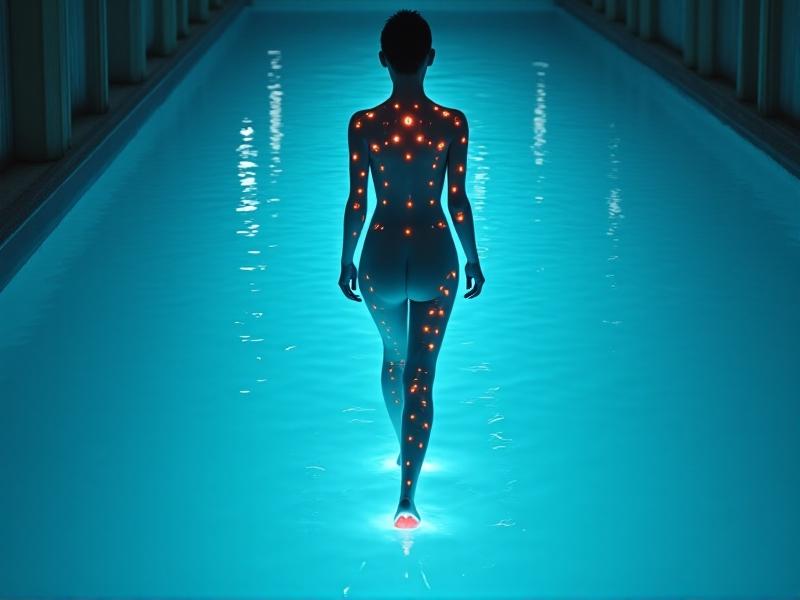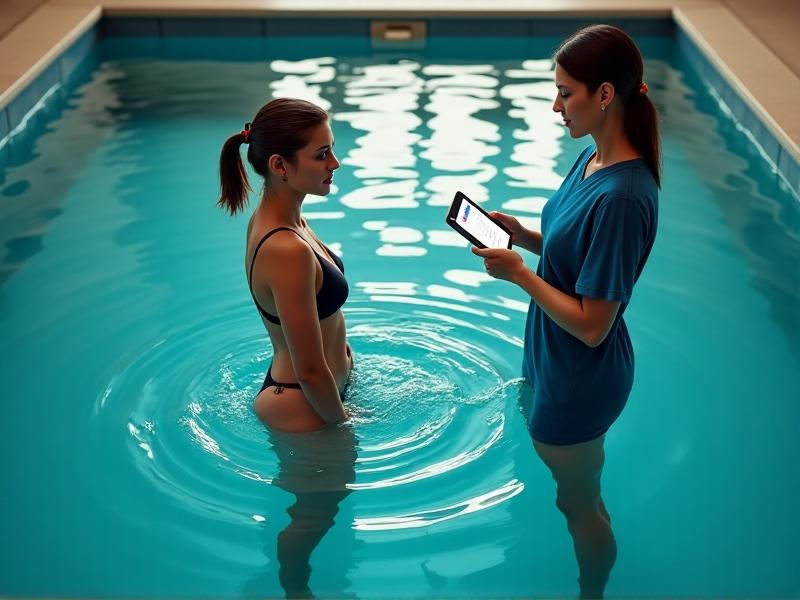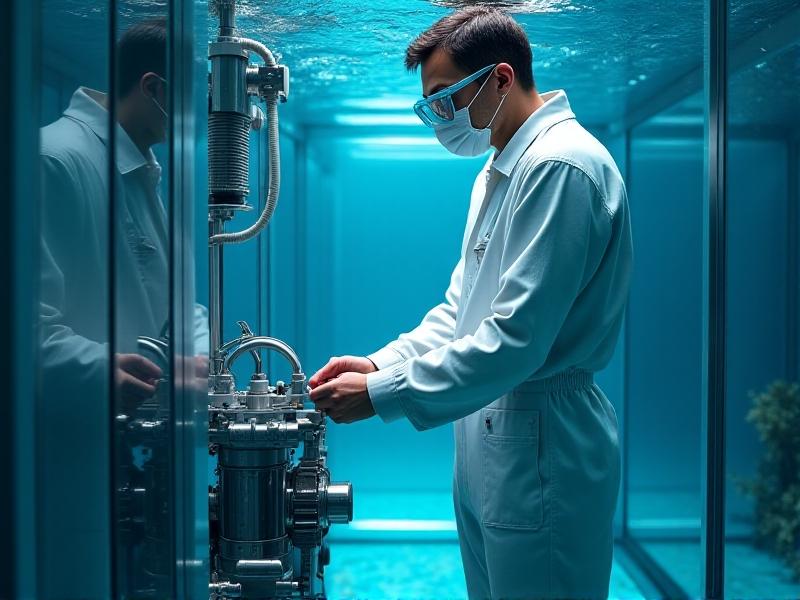Hydrodynamic Gait Analysis for Parkinson’s
Understanding Hydrodynamic Gait Analysis
Hydrodynamic gait analysis is an innovative approach to studying human movement, particularly in water. This method leverages the principles of hydrodynamics to analyze how individuals walk or move in aquatic environments. For individuals with Parkinson’s disease, this technique offers a unique perspective on gait abnormalities that are often difficult to assess on land. The buoyancy of water reduces the impact on joints, allowing for a more natural and less painful movement, which can be crucial for patients with mobility issues.
In hydrodynamic gait analysis, sensors and motion capture technology are used to track the movement of the body in water. These sensors can detect subtle changes in gait patterns, providing valuable data that can be used to tailor rehabilitation programs. The analysis can reveal asymmetries, irregular step lengths, and other gait abnormalities that are characteristic of Parkinson’s disease. By understanding these patterns, healthcare professionals can develop more effective treatment plans.
Moreover, hydrodynamic gait analysis is not just limited to clinical settings. It can also be used in research to better understand the biomechanics of Parkinson’s disease. By studying how patients move in water, researchers can gain insights into the underlying mechanisms of the disease and explore new avenues for treatment. This approach has the potential to revolutionize the way we understand and manage Parkinson’s disease.

The Science Behind Hydrodynamics and Gait
Hydrodynamics is the study of fluids in motion, and it plays a crucial role in understanding how humans move in water. When a person walks in water, the buoyant force counteracts gravity, reducing the load on the joints and muscles. This reduction in load allows for smoother and more controlled movements, which is particularly beneficial for individuals with Parkinson’s disease. The resistance of water also adds an extra layer of complexity to movement, requiring more effort and coordination.
In hydrodynamic gait analysis, the principles of hydrodynamics are applied to study how these forces affect gait patterns. For example, the drag force exerted by water can slow down movements, making it easier to detect abnormalities that might be missed on land. Additionally, the buoyant force can help stabilize the body, reducing the risk of falls and allowing for more accurate data collection.
The science behind hydrodynamics and gait is still evolving, but the potential applications are vast. By understanding how these forces interact with the human body, researchers can develop more effective rehabilitation techniques and improve the quality of life for individuals with Parkinson’s disease. This approach represents a promising intersection of physics, biology, and medicine.

Applications of Hydrodynamic Gait Analysis in Parkinson’s
Hydrodynamic gait analysis has several practical applications in the management of Parkinson’s disease. One of the most significant benefits is its ability to provide a more accurate assessment of gait abnormalities. Traditional gait analysis on land can be challenging due to the stiffness, tremors, and balance issues associated with Parkinson’s. In water, these symptoms are often less pronounced, allowing for a clearer picture of the patient’s movement patterns.
Another important application is in the development of personalized rehabilitation programs. By analyzing the data collected during hydrodynamic gait analysis, healthcare professionals can identify specific areas of weakness or imbalance and tailor exercises to address these issues. For example, if a patient tends to favor one side while walking, exercises can be designed to strengthen the weaker side and improve overall symmetry.
Hydrodynamic gait analysis can also be used to monitor the progression of Parkinson’s disease over time. By regularly assessing gait patterns, healthcare providers can track changes and adjust treatment plans accordingly. This ongoing monitoring can help slow the progression of the disease and improve the patient’s quality of life. Additionally, the data collected can be used in research to better understand the disease and develop new therapies.

Challenges and Limitations of Hydrodynamic Gait Analysis
While hydrodynamic gait analysis offers many benefits, it also comes with its own set of challenges and limitations. One of the primary challenges is the need for specialized equipment and facilities. Conducting gait analysis in water requires access to a pool, motion capture technology, and trained professionals who can interpret the data. These resources can be expensive and may not be readily available in all healthcare settings.
Another limitation is the complexity of the data collected. Analyzing movement in water involves accounting for multiple variables, such as buoyancy, drag, and the patient’s own muscle strength. This complexity can make it difficult to isolate specific gait abnormalities and may require advanced algorithms and software to interpret the data accurately.
Additionally, hydrodynamic gait analysis may not be suitable for all patients with Parkinson’s disease. Some individuals may have a fear of water or other medical conditions that make aquatic therapy unsafe. In these cases, alternative methods of gait analysis may be necessary. Despite these challenges, hydrodynamic gait analysis remains a valuable tool in the management of Parkinson’s disease, and ongoing research is likely to address many of these limitations in the future.
Future Directions in Hydrodynamic Gait Analysis
The field of hydrodynamic gait analysis is still in its early stages, but it holds immense promise for the future. One area of potential growth is the development of more advanced motion capture technology. As sensors become smaller, more accurate, and less intrusive, they will be able to provide even more detailed data on gait patterns. This improvement in technology could lead to more precise assessments and more effective treatment plans for individuals with Parkinson’s disease.
Another future direction is the integration of hydrodynamic gait analysis with other forms of therapy. For example, combining aquatic therapy with virtual reality could create immersive rehabilitation experiences that are both effective and engaging. Virtual reality could also be used to simulate different environments, allowing patients to practice walking in various conditions and improve their overall mobility.
Finally, ongoing research into the biomechanics of Parkinson’s disease will continue to inform the development of hydrodynamic gait analysis. By understanding the underlying causes of gait abnormalities, researchers can develop targeted interventions that address the root of the problem. This approach has the potential to not only improve the quality of life for individuals with Parkinson’s but also to slow the progression of the disease. The future of hydrodynamic gait analysis is bright, and it will undoubtedly play a crucial role in the ongoing fight against Parkinson’s disease.








